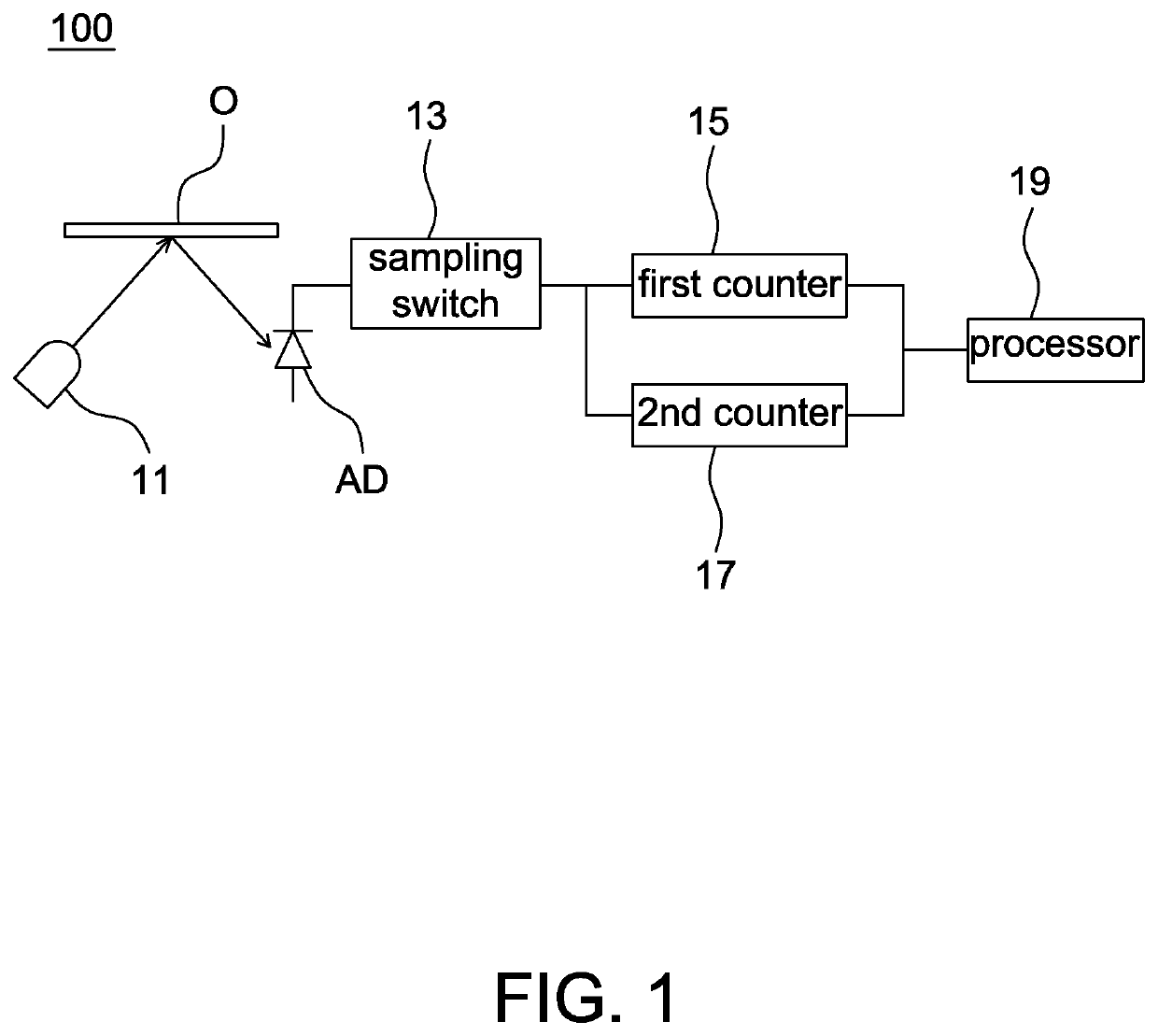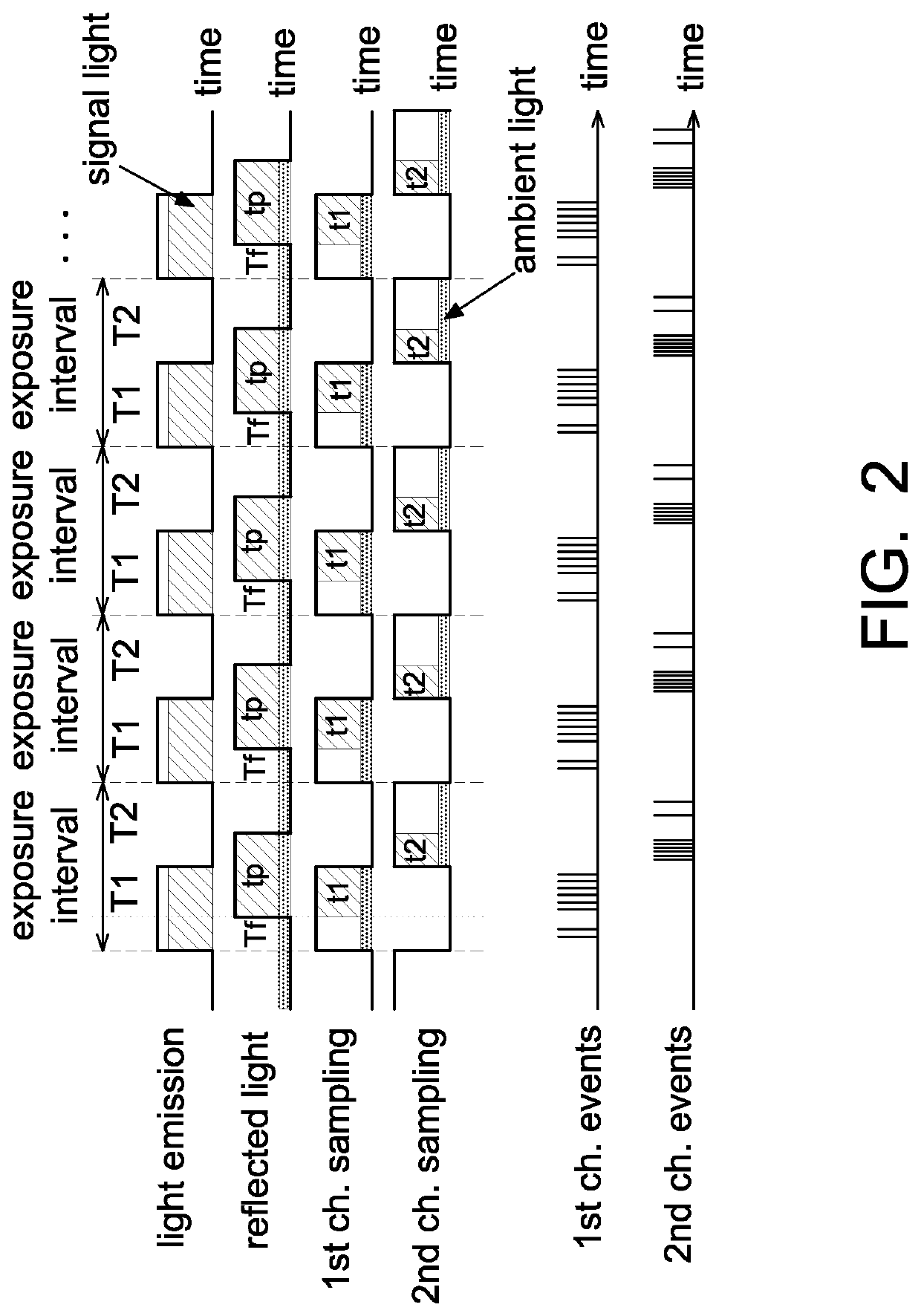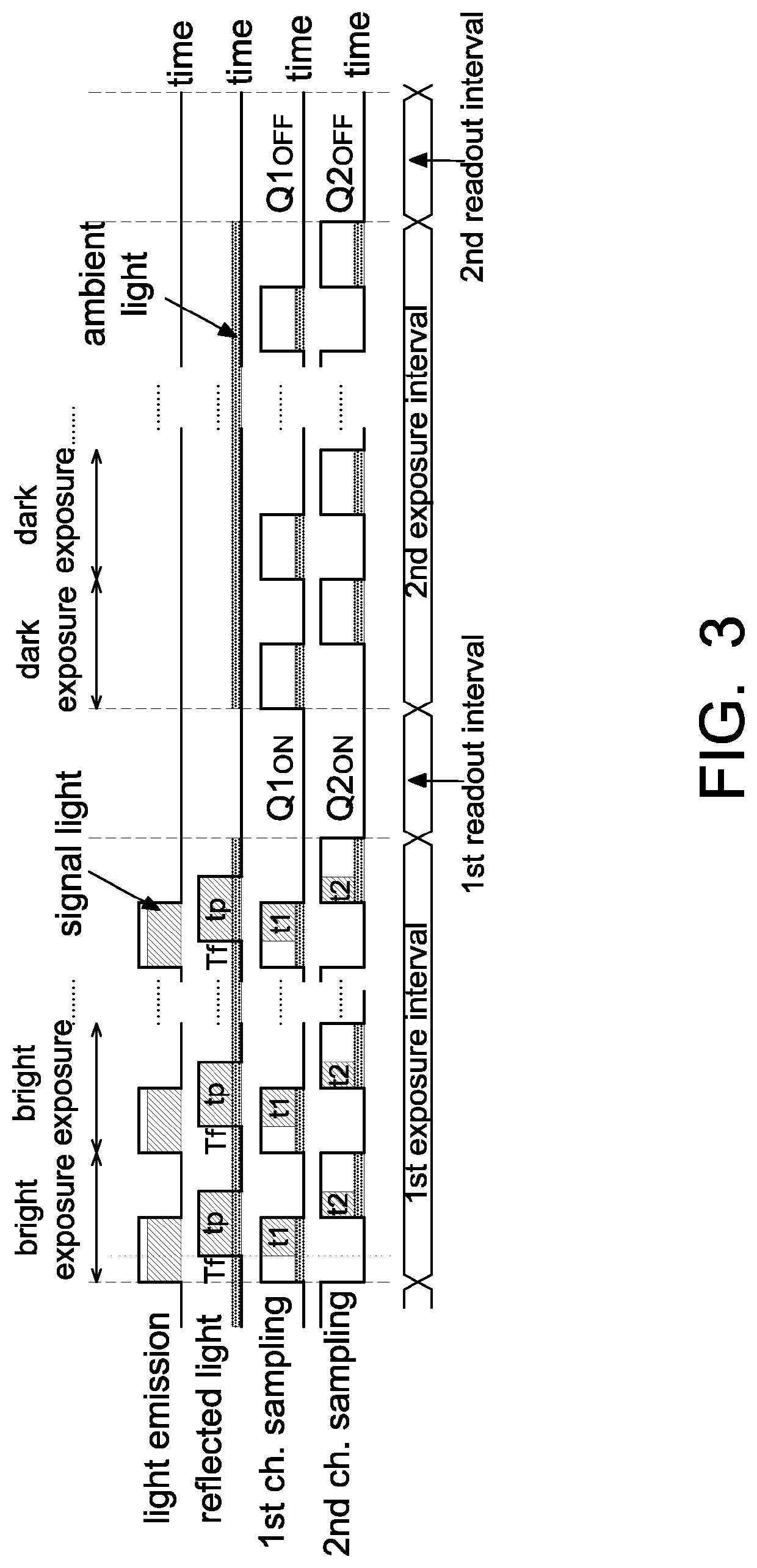Avalanche diode based object detection device
an object detection and diode technology, applied in the field of optical object detection devices, can solve the problems of affecting detection results, affecting detection accuracy,
- Summary
- Abstract
- Description
- Claims
- Application Information
AI Technical Summary
Benefits of technology
Problems solved by technology
Method used
Image
Examples
first embodiment
[0027]Referring to FIG. 2, one example of the object detection device 100 according to the present disclosure is illustrated hereinafter.
[0028]The light source 11 is a laser diode (LD), e.g., VCSEL. The light source 11 emits light toward an object O with an identifiable spectrum (e.g., red light and / or infrared light), wherein the object O is any object within a detectable distance of the object detection device 100 without particular limitations as long as the object O reflects the light emitted by the light source 11. For example, FIG. 2 shows that the light source 11 is turned on to emit light within a first interval T1 and turned off within a second interval T2, and the light source 11 operates repeatedly in this way. For example, one exposure interval=T1+T2.
[0029]FIG. 2 shows that after the light source 11 is turned on to emit light, the emitted light reaches the avalanche diode AD after being reflected by the object O by a time interval Tf. The avalanche diode AD is, for examp...
second embodiment
[0039]To reduce the influence from ambient light, the differential operation between bright exposures and dark exposures is performed. For example referring to FIG. 3, it is an operational schematic diagram of an object detection device according to the present disclosure, which is also adaptable to the object detection device 100 in FIG. 1.
[0040]In the embodiment of FIG. 3, a first exposure interval includes a plurality of bright exposures, and the operation of each bright interval is identical to that of one exposure interval (T1+T2) in FIG. 2, and thus FIG. 3 omits the timing diagram of events. Accordingly, in the first exposure interval, the first counter 15 accumulates a first count value Q1ON which is N times of avalanche events of the first channel in one exposure interval of FIG. 2, e.g., Q1ON=N×CN1 (referring to equation 1). Similarly, the second counter 17 accumulates a second count value Q2ON which is N times of avalanche events of the second channel in one exposure inter...
third embodiment
[0046]Referring to FIG. 4, it is an operational schematic diagram of an object detection device according to the present disclosure, which is also implemented by the object detection device 100 of FIG. 1. The difference between FIG. 3 and FIG. 4 is that in FIG. 4, bright exposures and dark exposures are arranged adjacent to each other to further reduce the influence of time-changed ambient light.
[0047]As shown in FIG. 4, the light source 11 is turned on to emit light toward the object O within a first interval T1, and is turned off in a second interval T2, a third interval T3 and a fourth interval T4. In this embodiment, the first interval T1, the second interval T2, the third interval T3 and the fourth interval T4 form one exposure interval, e.g., one exposure interval=T1+T2+T3+T4, and T1 to T4 are preferably the same. As the first sampling channel detects the energy of light source signal in the first time interval T1, and the second sampling channel detects the energy of light so...
PUM
 Login to View More
Login to View More Abstract
Description
Claims
Application Information
 Login to View More
Login to View More - R&D
- Intellectual Property
- Life Sciences
- Materials
- Tech Scout
- Unparalleled Data Quality
- Higher Quality Content
- 60% Fewer Hallucinations
Browse by: Latest US Patents, China's latest patents, Technical Efficacy Thesaurus, Application Domain, Technology Topic, Popular Technical Reports.
© 2025 PatSnap. All rights reserved.Legal|Privacy policy|Modern Slavery Act Transparency Statement|Sitemap|About US| Contact US: help@patsnap.com



